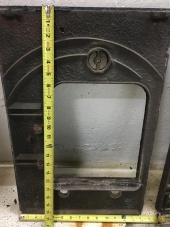Regarding Jacob's comments - all taken in good faith. My main goal is to get something that works for the specific goal I set, this one being a vessel with a closed combustion chamber. I'm simply expecting to burn small sticks and other fuel similar to a rocket stove used for cooking, but if done right it will contain the smoke gasses and vent them how and where I want.
The goes-out must handle the goes-in so the obvious starting point is to make intake and exhaust the same size. This should work in regard to air in = air out.
Picture a 20 lb propane tank safely decommissioned, valve removed. Where the valve once was, cut a 3" hole for the steel riser, weld riser to tank about 1 1/2" from bottom of tank. Flip over tank, add legs as required, add burn tube, J-tube and elbow from burn tube to heat riser. Near the bottom of the tank (formerly the top) cut another 3" hole for the exhaust and weld in a bulkhead/ pipe stub. Then add an elbow and enough vertical pipe to get comfortably above the level of the top of the heat riser and it should be ready for testing.
The design is crude, uninsulated and likely inefficient. However, before I attempt to build a full-on RMH with insulated burn tube and heat riser and thermal battery bench, I'd like to know that I can make a gas-tight vessel that applies at least one principle, that being the rocket action. The added benefit of using the propane tank as a bell (hopefully) is to allow for a greater area for the heat from exhaust gases to radiate out before being vented to the atmosphere. Crude, but a baby-step if you will.
Thus far, the scariest part of the process has been emptying the propane tank safely and burning off the residual gas that remains in the tank. Fortunately I didn't create a bomb and the remainder of the project shouldn't have anything near the risk level as decommissioning the tank.
Thanks for the input,
Dan



